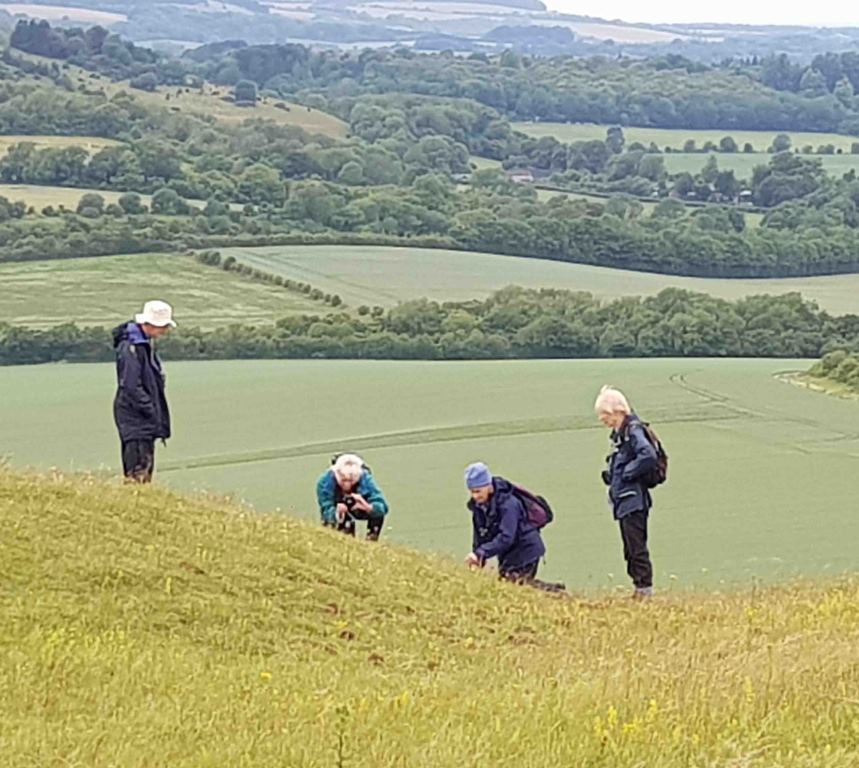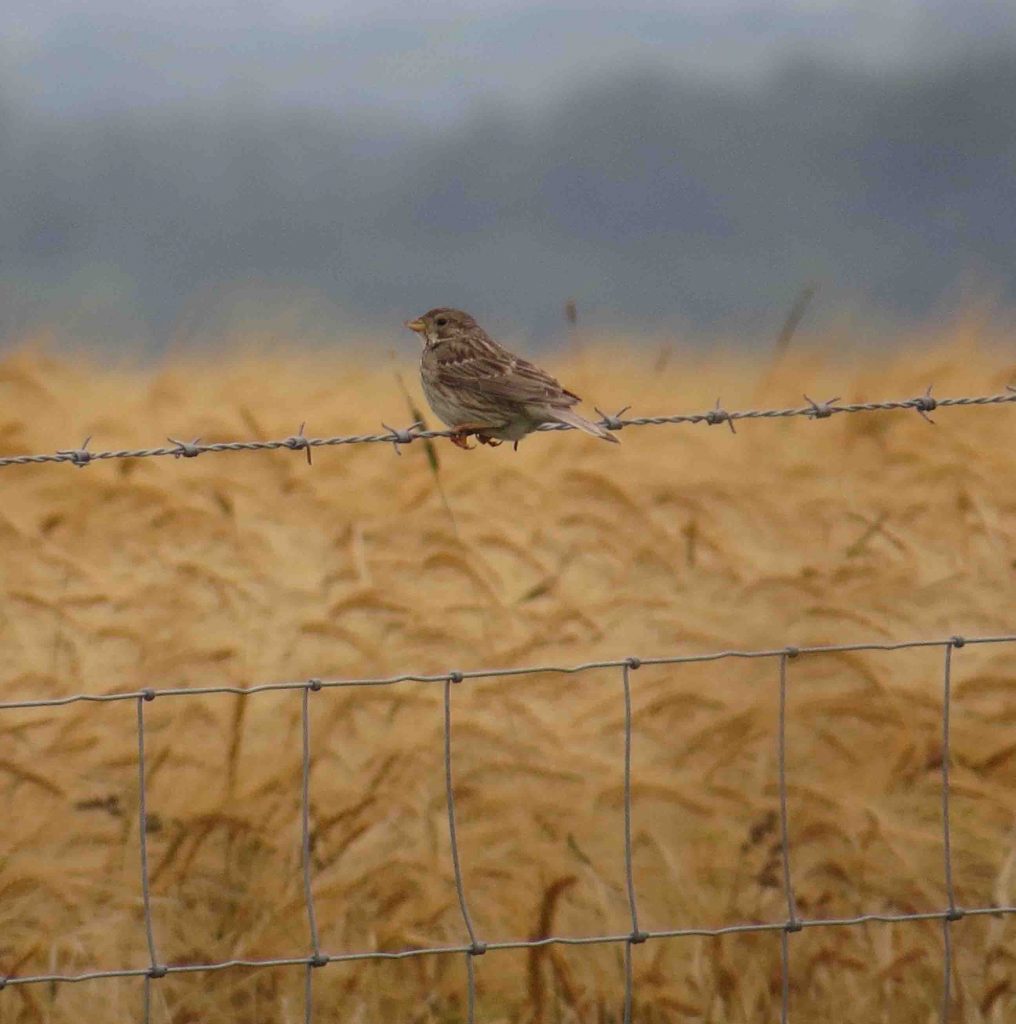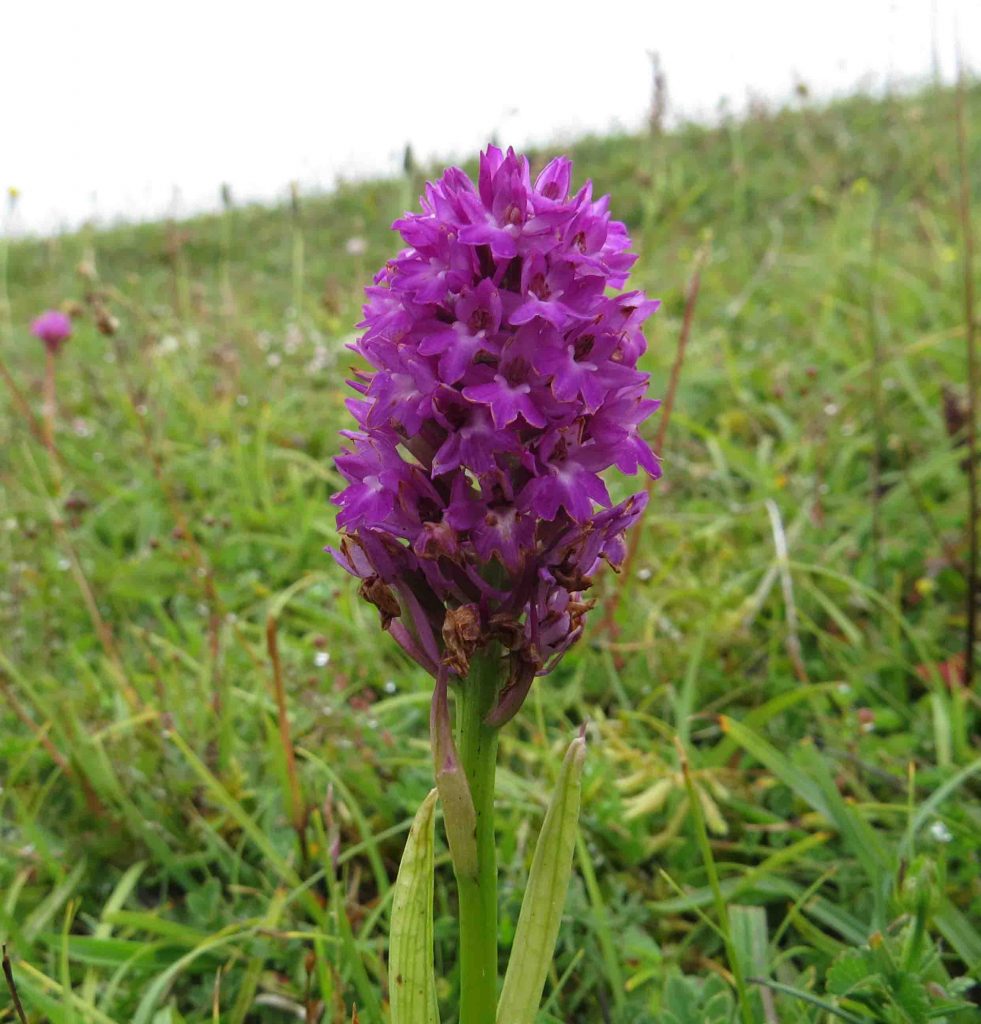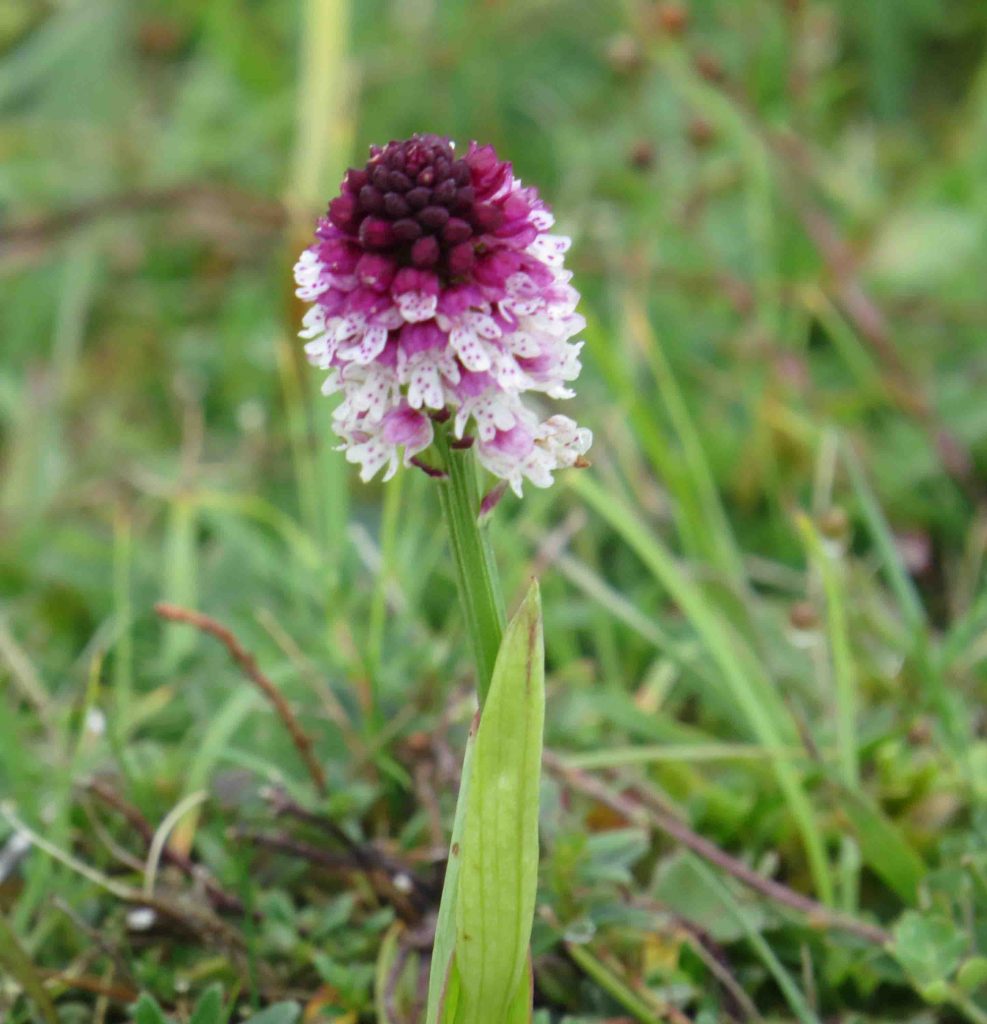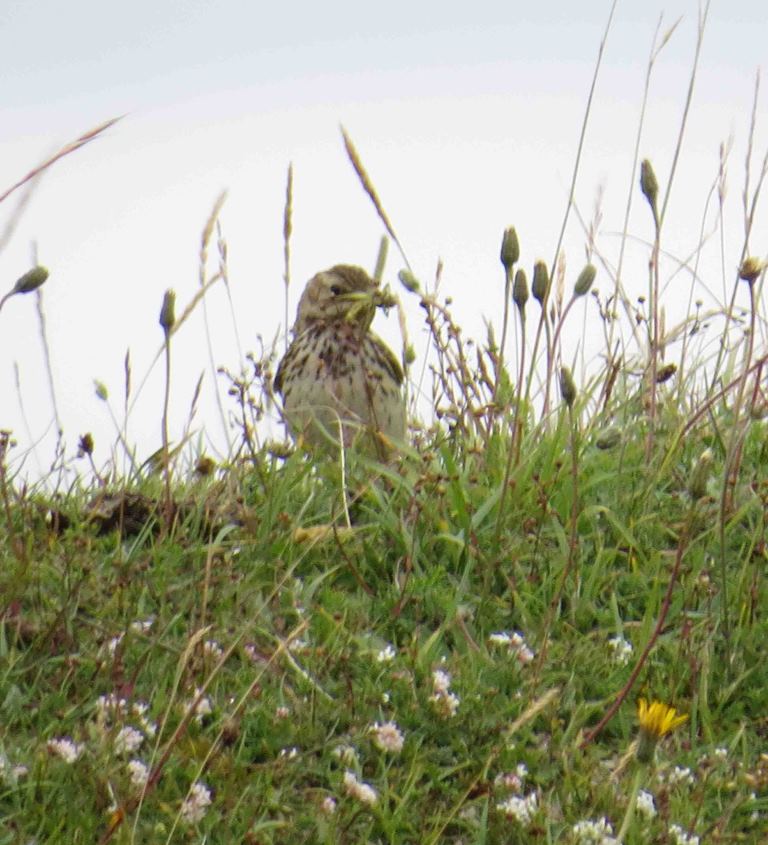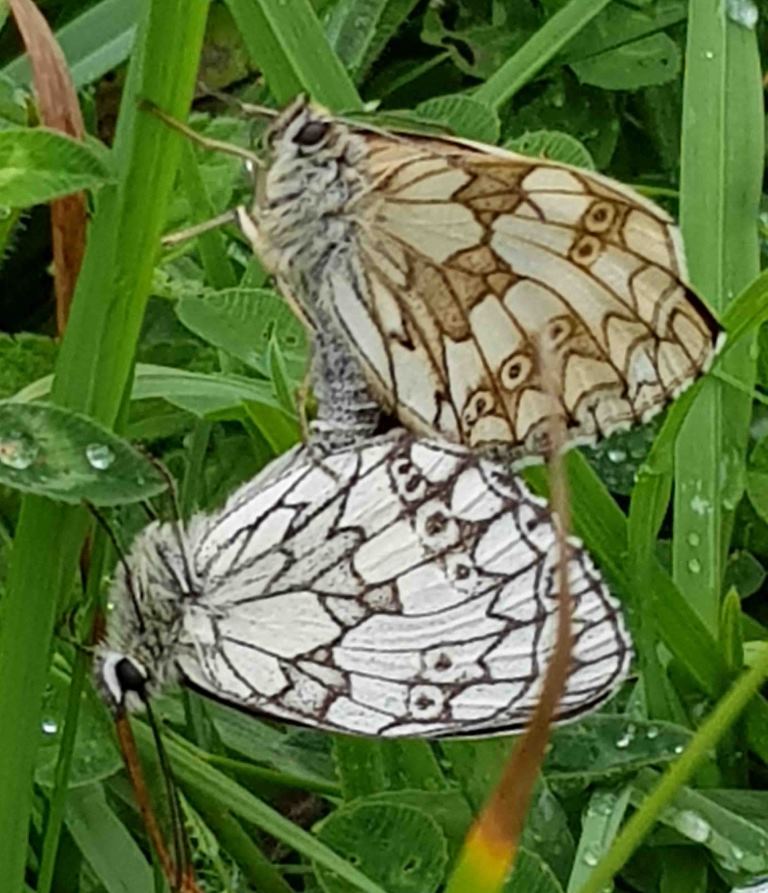Sarah White and Julia Cooper led a field trip to Ladle Hill, near Kingsclere, on the morning of Saturday 4 July. Sarah led the first group of 6 members and Julia followed half an hour later with another group of 5. It was a mild, damp day with a strong south-westerly wind. The walk started from the crest of the ridge where the Wayfarer’s Way crosses the Sydmonton to Ashley Warren road. While the group were gathering at the start, a Roe Deer was spotted deep amongst the corn crop in the field across the road. The walk started out westwards along the Wayfarers’ Way. The track followed a magnificent line of Beech trees, before leading into a grassy field where the short turf was dotted with the yellow of Lady’s Bedstraw and Common Bird’s-foot-trefoil, the white of Hedge Bedstraw and White Clover and the pink of Red Clover. Wild Teasel and thistles stood tall around the margin of a dried-up pond, while in the damper area, Great Willowherb, Branched Bur-reed, Gypsywort and Water Mint could be seen. The walk continued through a gateway, then westwards along a track with first oats then barley on one side and wheat on the other. Tall heads of Rye Brome grass showed above the crops – apparently this is a species which is becoming a problem in arable farmland. Fool’s Parsley, Common Field-speedwell, Dove’s-foot Crane’s-bill and Scarlet Pimpernel were seen beside the track. Skylarks were singing overhead and several Corn Buntings flew down deep into the crops. Towards the top of the hill, there was another dried-up pond beside the track. Redshank and Silverweed dominated the bottom of the pond area, while Pyramidal Orchid, Meadow Vetchling and Goat’s-beard were found around the margins.
Four Corn Buntings were perching on the fence which enclosed the Iron Age Hill fort of Ladle Hill. The short turf within was dotted with a rich variety of flowers, including Wild Thyme, Small Scabious, Common Rock-rose, Squinancywort, Eyebright, Common Milkwort, Fairy Flax, Dwarf Thistle, Red Bartsia and Yellow Rattle. The abundant Pyramidal Orchids were at their peak, while many of the Chalk Fragrant Orchids were a little past their best. The walk continued clockwise round the ramparts. Highlight of the morning were the tiny Burnt Orchids, found at about 4 different locations, sometimes alone, but with one bigger group of about a dozen specimens. These attractive little orchids were just a few inches high, with a deep reddish-purple tip, grading to whitish at the bottom of the flower head. A Meadow Pipit with food in its beak indicated that there was a nest nearby, so the two groups kept well away from the centre of the fort. The original plan had been to circle the ramparts, but the agitated calls of Corn Buntings in the north-west sector led to a revision of the route. Instead, the walk continued lower down the hillside on the outside of the ramparts. This included a struggle through a dense stand of Hogweed and Nettles, where many Meadow Brown and at least 3 Red Admiral butterflies were sheltering from the wind. Emerging from the dense vegetation, the path contoured across a grassy field with short flowery turf which sloped steeply down towards a belt of woodland. This section was more sheltered than the hill fort had been and more butterflies were seen, including Marbled White, Small Skipper, Green-veined White, Large White and Meadow Brown. The markings on the undersides of a mating pair of Marbled Whites were pale brown on the female and pale grey on the male. Flowers seen here included Harebell, Wild Mignonette and Common Spotted-orchid. After crossing a perilous stile and passing through a kissing gate, the route returned to the Wayfarer’s Way. Back at the row of Beeches near the road, the wind was still blowing strongly, but despite this, wild bees were flying in and out of a hole in a dead tree. Six years earlier, on the Society’s previous visit to Ladle Hill, the bees had been nesting in the same hole. Some members then went on to Newbury to watch the Peregrine nest on the BT building.
Pictures by Fiona Brown and Laurie Haseler

